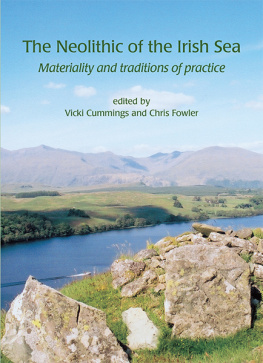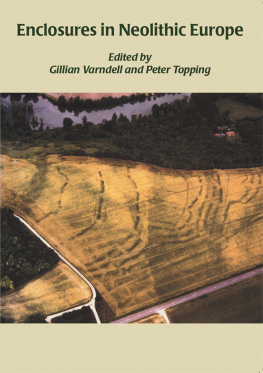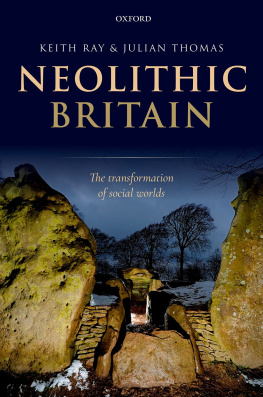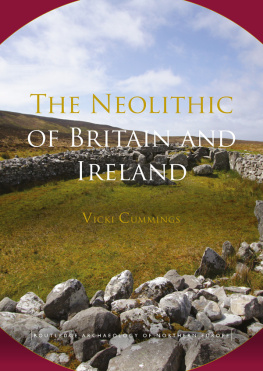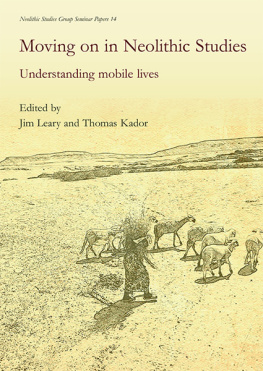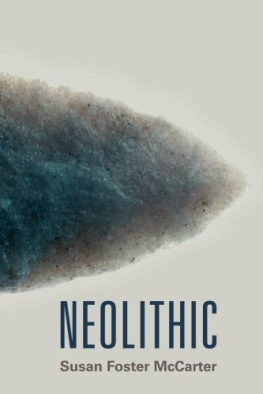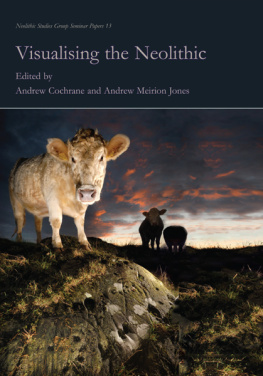Peter Topping - Neolithic Landscapes
Here you can read online Peter Topping - Neolithic Landscapes full text of the book (entire story) in english for free. Download pdf and epub, get meaning, cover and reviews about this ebook. year: 2017, publisher: Casemate Publishers & Book Distributors, LLC, genre: Politics. Description of the work, (preface) as well as reviews are available. Best literature library LitArk.com created for fans of good reading and offers a wide selection of genres:
Romance novel
Science fiction
Adventure
Detective
Science
History
Home and family
Prose
Art
Politics
Computer
Non-fiction
Religion
Business
Children
Humor
Choose a favorite category and find really read worthwhile books. Enjoy immersion in the world of imagination, feel the emotions of the characters or learn something new for yourself, make an fascinating discovery.
- Book:Neolithic Landscapes
- Author:
- Publisher:Casemate Publishers & Book Distributors, LLC
- Genre:
- Year:2017
- Rating:3 / 5
- Favourites:Add to favourites
- Your mark:
- 60
- 1
- 2
- 3
- 4
- 5
Neolithic Landscapes: summary, description and annotation
We offer to read an annotation, description, summary or preface (depends on what the author of the book "Neolithic Landscapes" wrote himself). If you haven't found the necessary information about the book — write in the comments, we will try to find it.
Neolithic Landscapes — read online for free the complete book (whole text) full work
Below is the text of the book, divided by pages. System saving the place of the last page read, allows you to conveniently read the book "Neolithic Landscapes" online for free, without having to search again every time where you left off. Put a bookmark, and you can go to the page where you finished reading at any time.
Font size:
Interval:
Bookmark:

Neolithic Studies Group Seminar Papers 2
Edited by Peter Topping

Published in the United Kingdom in 1997 by
OXBOW BOOKS
10 Hythe Bridge Street, Oxford OX1 2EW
and in the United States by
OXBOW BOOKS
1950 Lawrence Road, Havertown, PA 19083
Oxbow Books and the individual contributors 1997, reprinted 2016
Paperback edition: ISBN 978-1-84217-077-9
Digital edition: ISBN 978-1-78570-154-2
Mobi edition: ISBN 978-1-78570-505-2
A CIP record for this book is available from the British Library
All rights reserved. No part of this book may be reproduced or transmitted in any form or by any means, electronic or mechanical including photocopying, recording or by any information storage and retrieval system, without permission from the publisher in writing.
For a complete list of Oxbow titles, please contact:
| UNITED KINGDOM | UNITED STATES OF AMERICA |
| Oxbow Books | Oxbow Books |
| Telephone (01865) 241249, Fax (01865) 794449 | Telephone (800) 791-9354, Fax (610) 853-9146 |
| Email: | Email: |
| http://www.oxbowbooks.com | www.casemateacademic.com/oxbow |
Oxbow Books is part of the Casemate Group
Front cover: Drawing by Peter Topping.
The real voyage of discovery consists not in seeking new landscapes but in having new eyes. Marcel Proust
This book presents the proceedings of a seminar organised by the Neolithic Studies Group, and compliments that published previously under the editorship of Darvill and Thomas (1996) which reviewed Neolithic houses in northwest Europe.
The Neolithic Studies Group comprises an informal gathering of archaeologists whose research interests are focused upon the Neolithic period. The Group was established in the Spring of 1984, and its membership has risen to roughly 250 individuals drawn primarily from the UK, but also with representatives from other nations ranged along the Atlantic coastline. The annual programme comprises a spring meeting held over a weekend at different venues previously in the UK, Ireland, and the Channel Islands which enables members to visit sites and consider recent research from that area, and an autumn meeting in London which explores a current topic or hypothesis.
Membership of the Neolithic Studies Group is open to anyone with an active interest in the Neolithic period in Europe. The present membership includes academic staff and students, museums staff, archaeologists drawn from government institutions and those attached to trusts and units. There is no application procedure or subscription to join the Group, members are those currently on the mailing list. Anyone can be added to the mailing list at any time, the only rule of the Group being that names of those who do not attend four consecutive meetings (and do not send apologies or a request to remain on the list to the Group Coordinators) are removed from the membership.
The Group relies on the enthusiasm of its members to organise its annual meetings, and the two coordinators are responsible for the mailing list, finances and the general arrangement of the meetings.
Anyone requiring further information about the Group or its programme of events should contact the coordinators at :
| Tim Darvill | Gordon Barclay |
| School of Conservation Sciences | Historic Scotland |
| Bournemouth University | Longmore House |
| Poole | Salisbury Place |
| Dorset | Edinburgh |
| BH12 5BB | EH9 1SH |
The papers published here are largely those presented at a Neolithic Studies Group (NSG) seminar which took place at the British Museum on Monday 14th November 1994. The seminar was entitled Domestic Setdement and the Landscape, and was designed to address the question of how ordinary, non-ceremonial or domestic sites related to the wider landscape and their individual topographic settings. Of those papers contributed, eight are reproduced as given at the seminar, two have seen a change of subject (Chapman and Whittle), and an additional two papers have been added to increase the range of regional studies (Barber and Topping). Most of the papers published here were submitted in the Spring of 1996.
The theme was intended to build upon that of a previous seminar, held in 1992, which had reviewed the evidence relating to Neolithic houses (see Darvill and Thomas 1996). The 1994 seminar was designed to set the results of the earlier discussion into a holistic landscape context. It was suggested that Neolithic studies in general were at a point where the wider issues of landscape interaction should be addressed. In effect, what was being suggested by the organiser (PT) was that research should perhaps focus on issues beyond the traditional approaches of functionalism and environmental determinism, and look to what is now becoming known as phenomenology to broaden interpretative perspectives (cf Tilley 1994). To this end speakers were given an advance circular which included a range of possible discussion points for consideration. Amongst these were:
is it possible to reconstruct how the communities perceived their landscape context, and were there identifiable points of symbolic reference within the landscape;
how peripheral were the ritual landscapes, were ritual/burial monuments integrated amongst the domestic settlements and field systems;
is it possible to reconstruct the role symbolism played in the structuring of settlements;
all of which were designed to lead to a review of the wider perception of the landscape, its possible zonation and structuring, and finally to establish whether such concepts might be reflected at the micro-level in settlement form and layout.
Integral to these questions, and of equal interest, were the ways in which communities moved around the countryside, and to what level the contemporary landscape perception structured or otherwise led to a varied reaction to different topographic locations. Traditionally much of early human interaction within the landscape has been viewed as an attempt to subjugate nature, but this does not take into account the ethnography of many pre-industrial societies which had a deep respect for the natural order and a firmly rooted desire to live in harmony with it. The subjugation hypothesis can more pertinently be seen simply to reflect theory being driven by a modern (1970/80s) socio-economic bias.
Whether this corpus of papers (to paraphrase one reviewer) marks a shift in the mindset of Neolithic Studies, or whether it just reflected the current paradigm, or perhaps paradigms, of the group (Mason 1995, 789) remains to be seen. However, what is evident is that research is beginning to look for alternative explanations for the whole range of landscape interaction during the Neolithic period which takes into account motives other than the purely socio-economic. This inevitably would appear to be leading to the conclusion that land-use and the wider perception of the landscape is, as with Neolithic material culture, heavily regionalised in its accent and that there is little uniformity to human interaction with the physical environment. The challenge ahead is to define the detail of these individual responses.
The editor would like to thank the NSG Coordinators for their support of the seminar, and the British Museum, in particular Ian Kinnes, Ian Longworth and Gillian Varndell of the Department of Prehistoric and Romano-British Antiquities for providing the venue and ensuring the smooth-running of the event. Thanks also go to the Royal Commission on the Historical Monuments of England for their support, particularly Una Sanderson who undertook the administration of the seminar and the assembling and checking of the proceedings, Trevor Pearson for assistance with graphics, and Alastair Oswald and David Field for general support.
Next pageFont size:
Interval:
Bookmark:
Similar books «Neolithic Landscapes»
Look at similar books to Neolithic Landscapes. We have selected literature similar in name and meaning in the hope of providing readers with more options to find new, interesting, not yet read works.
Discussion, reviews of the book Neolithic Landscapes and just readers' own opinions. Leave your comments, write what you think about the work, its meaning or the main characters. Specify what exactly you liked and what you didn't like, and why you think so.




